The Sustenance of Space
An Exploration of NASA’s Plant Programs
Part 1
Editor’s Note
Space may be the final frontier, but we rarely imagine it associated with dining—or perhaps with eating at all. Of course, it is one of the many considerations NASA researchers have on their minds, thankfully for those who need to be fed on their missions. Last year, the Life & Thyme editorial team was welcomed to the Kennedy Space Center where researchers are exploring exactly that. Today begins a three-part series about the organization’s efforts to that end, as well as growing food in orbit and on Mars.
Words by GIA HUGHES
Photography by ANTONIO DIAZ
Videography by AUSTIN STRAUB
We touch down at the Orlando airport as the afternoon creeps toward dusk and make our way to baggage claim, gathering bags and Pelican cases. We group our belongings inside the airport exit door as we wait for our Uber to arrive. When we see the SUV approach the curb, we exit the automatic double-doors and step into an ecosystem entirely foreign to us Californians. The air is dense with humidity, although the day is considered balmy and beautiful by our obliging driver, a thirty-year resident of Florida.
The next two mornings we travel to the Kennedy Space Center located about fifty minutes east of Orlando. The first is dedicated to touring the Visitor Complex. Like many Americans, growing up I romanticized the idea of the thunderous blaze of launching rockets, the methodical calculation of numbers, and the endless analysis of information by men and women in pressed white lab coats. Photos are taken at every opportunity, our eyes lighting up at the sight of each new rocket.
We awake early on the second morning, the dawn light cracking through drawn shades. With bleary eyes and coffee in hand, we return eastward with the NASA check-in center entered as our destination. As we pull into the lot, we are greeted and ushered inside for the day’s first order of business—having our photos taken for personal ID tags to be worn as we wander the halls. We exchange glances, eager to acknowledge evidence that not only are we actually here, but are approved to be inside. We’re giddy as we climb into the van taking us into the NASA property.
When we pull up to the Space Station Processing Facility and hear two sonic booms—a sign of a test they’ve been running for several days. We pile out of the van, making our way inside the building’s lobby. We are to begin making our way through the unassuming facility with subtly-marked doors to arrive at our first destination: Advanced Plant Habitat. But before we enter the first doors into the hall lined with laboratories, I note a quote credited to Konstantin E. Tsiolkovsky looming on the lobby’s right-hand wall: “The Earth is the cradle of humanity, but one cannot live in a cradle forever.”
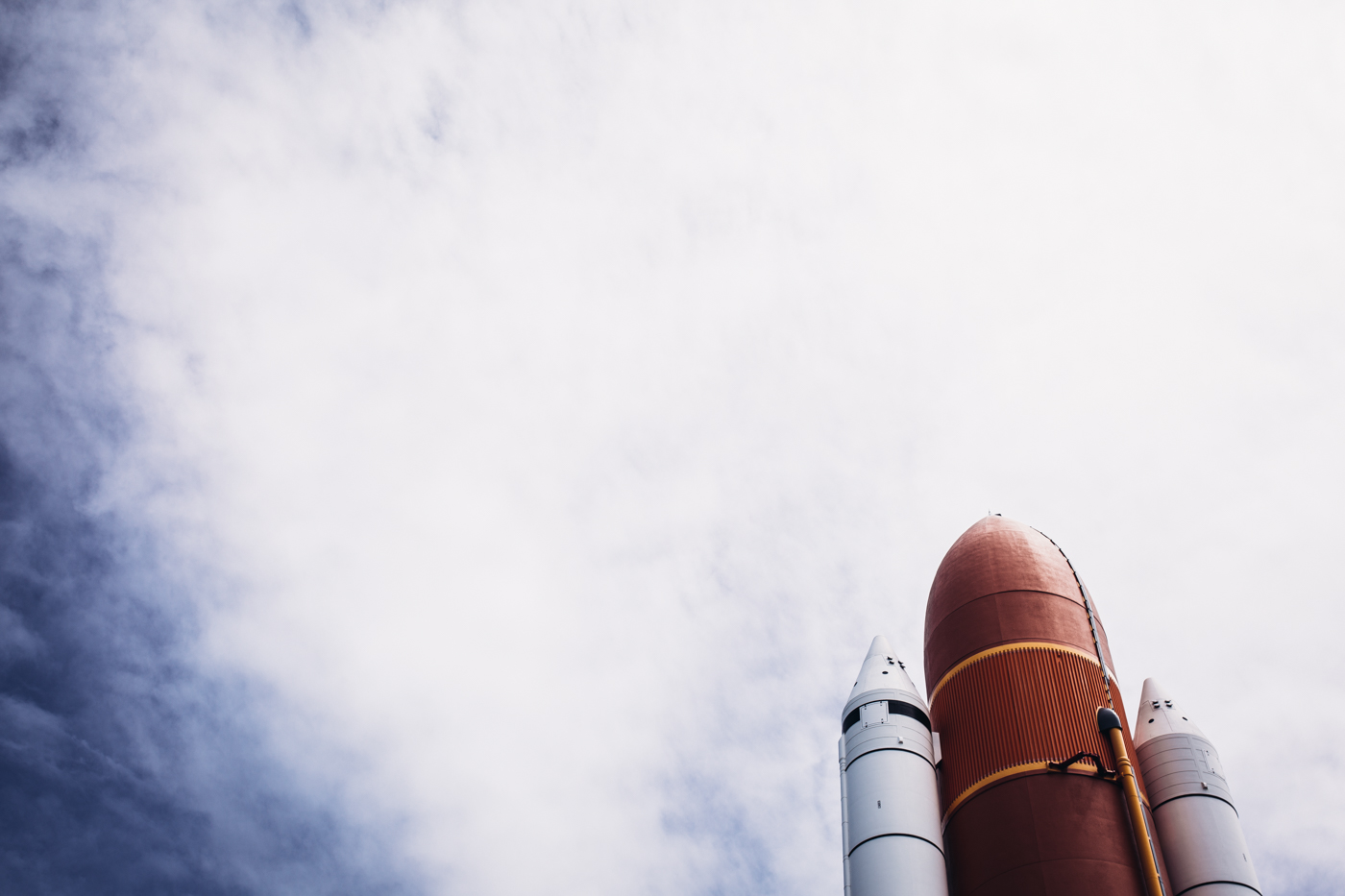
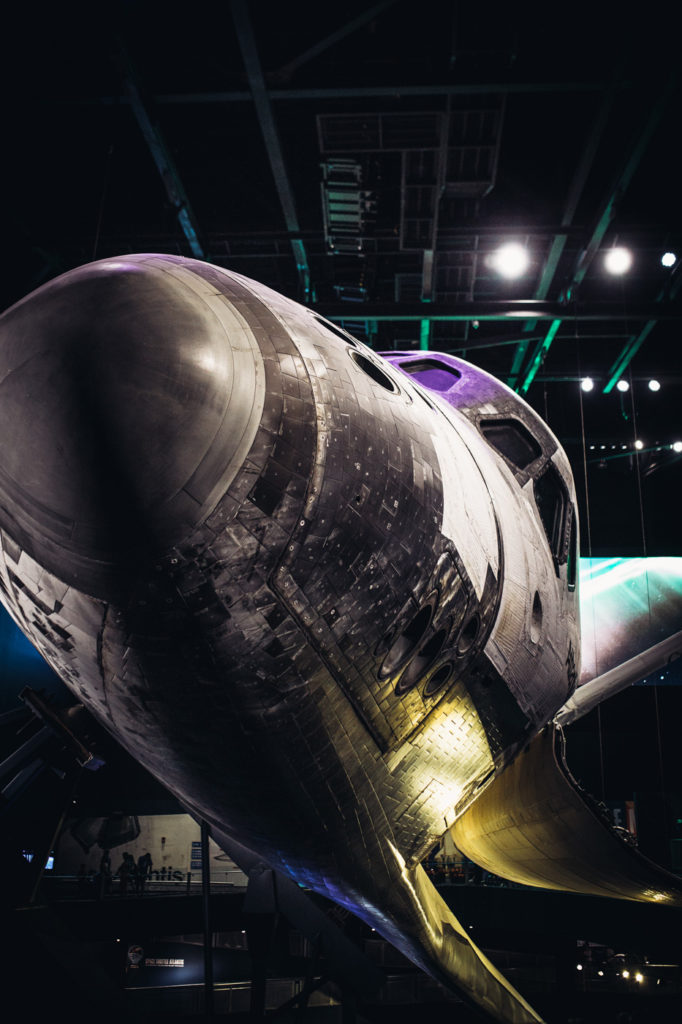
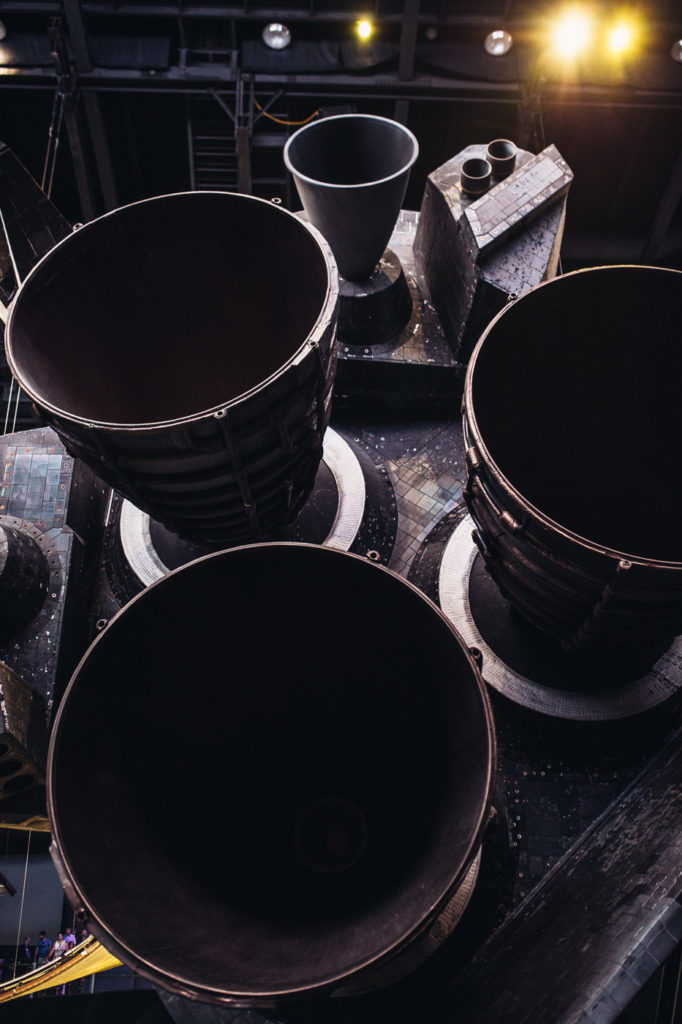
Advanced Plant Habitat
“What impresses me the most is I feel like we are trying to create Mother Earth in this box right here.” This is something Bryan Onate, Advanced Plant Habitat NASA Project Manager, will tell us. But first, we clothe ourselves in a robe, hairnet, and gloves so as not to contaminate the chamber we are about to enter—the International Space Station Environmental Simulator Room.
The environmental simulation chambers found here replicate the carbon dioxide, temperature and humidity levels on the International Space Station (ISS). Onate gestures to a panel on the wall to the right of this particular chamber door; it reads the ISS at twenty-two degrees Celsius, thirty-seven percent relative humidity, and carbon dioxide levels of three thousand parts per million. Through servers connected to the Huntsville Operations Support Center (HOSC) at Marshall Space Flight Center in Huntsville, Alabama, they receive real-time data from the space station. The payload is also commanded from Kennedy Space Center back to HOSC.
Through this simulation, Onate’s goal is to ascertain how to sustainably grow fresh food on the ISS. Onate opens the door to the room encompassing the environmental chamber; we all squeeze inside and close the door behind us. Here, we stand face to face with a flight unit.
What we are looking at is referred to as a quad locker payload—APH will take up the lower half of the EXPRESS rack (Expedite the Processing of Experiments to Space Station), as well as one left-hand ISIS (International Subrack Interface Standard) drawer on the ISS. Because the scientists can control the atmosphere in which these plants exist, they can modify the CO2, temperature, light, water and humidity levels to see how these plants will grow. With over 180 sensors, Advanced Plant Habitat is “a scientific toolbox,” Onate explains, removing the door shade from the machine we’re huddled around, revealing several rows of plants. He points to the top of the chamber: “This guy up here, this is our growth light assembly,” which consists of red, blue, green and white LED lights.
“The red LEDs allow the plants to grow, basically,” Onate explains. “The blue gives them a little bit of direction on which way is up; we have to pretend we are the sun, so they need to know which way to go. And the green actually makes the plants look green.” Without the green lighting, the plants would have a black or purple-tinted hue. Much like the way one could see if the leafy greens in a garden are wilting, a scientist can more easily determine if a plant is thriving or infected through this medium of light.
APH scientists have the ability to set the lighting up to one thousand micromoles—a measurement of light, or light unit—sent to the plants. “If you go outside right now, the sun is putting out about two thousand micromoles. We can do about half of what the sun provides in this little chamber,” Onate says. These plants will never experience natural light, only synthetic.
The automated computer running APH is referred to as “The Farmer.” “The Farmer is actually in charge of running the whole payload. We command everything from the ground and The Farmer goes off,” Onate says. “We tell him to go do this for the next hundred days and The Farmer will take every single day and add water, change the lights, take pictures, do whatever it has to do to feed himself.”
Within APH are four separate independent quadrants, totalling approximately eighteen-by-eighteen inches; space is limited for what can be grown. APH has grown dwarf wheat, for example. “It only grows to a certain height,” Onate says. “And we went from seed to seed.” The seed-to-seed sustainable life cycle is enabled by the planting of a seed, the growth of a seed into maturation, and then harvesting the seeds from those new plants to replant and restart the life cycle over again. A single quadrat provides all the room needed for this seed-to-seed growth.
At the time of this interview, APH is running tests on arabidopsis thaliana, a plant commonly tested on and often serving as the control in scientific experiments. During our visit, the arabidopsis specimens are about four weeks old; their stems are growing and they’re starting to sprout bulbs. This process—the one we’re staring at in the small chamber—is an experiment verification test. “This is the test we do before we actually run it on orbit,” Onate says. APH is currently testing on both arabidopsis (current experiments began on January 22) and dwarf wheat (which began on February 7).
In the near-forty years of plant research at NASA, APH is the largest environmentally-controlled plant chamber—meaning the machine can control temperature, humidity and carbon dioxide levels—to ever fly on the International Space Station. The goal is to fly it in orbit for one year without maintenance, other than the consumables that will be exchanged every 135 days, according to Onate.
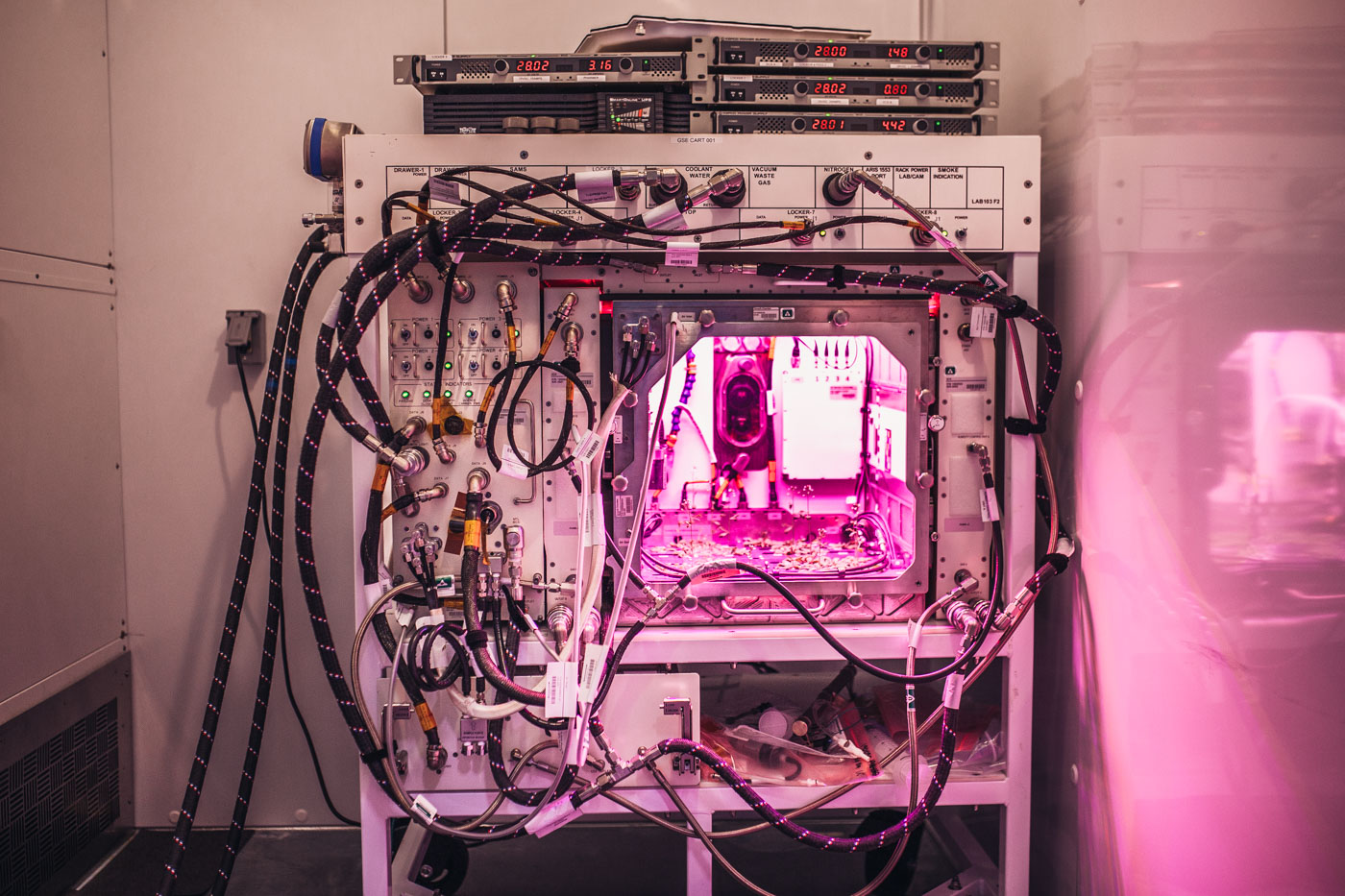
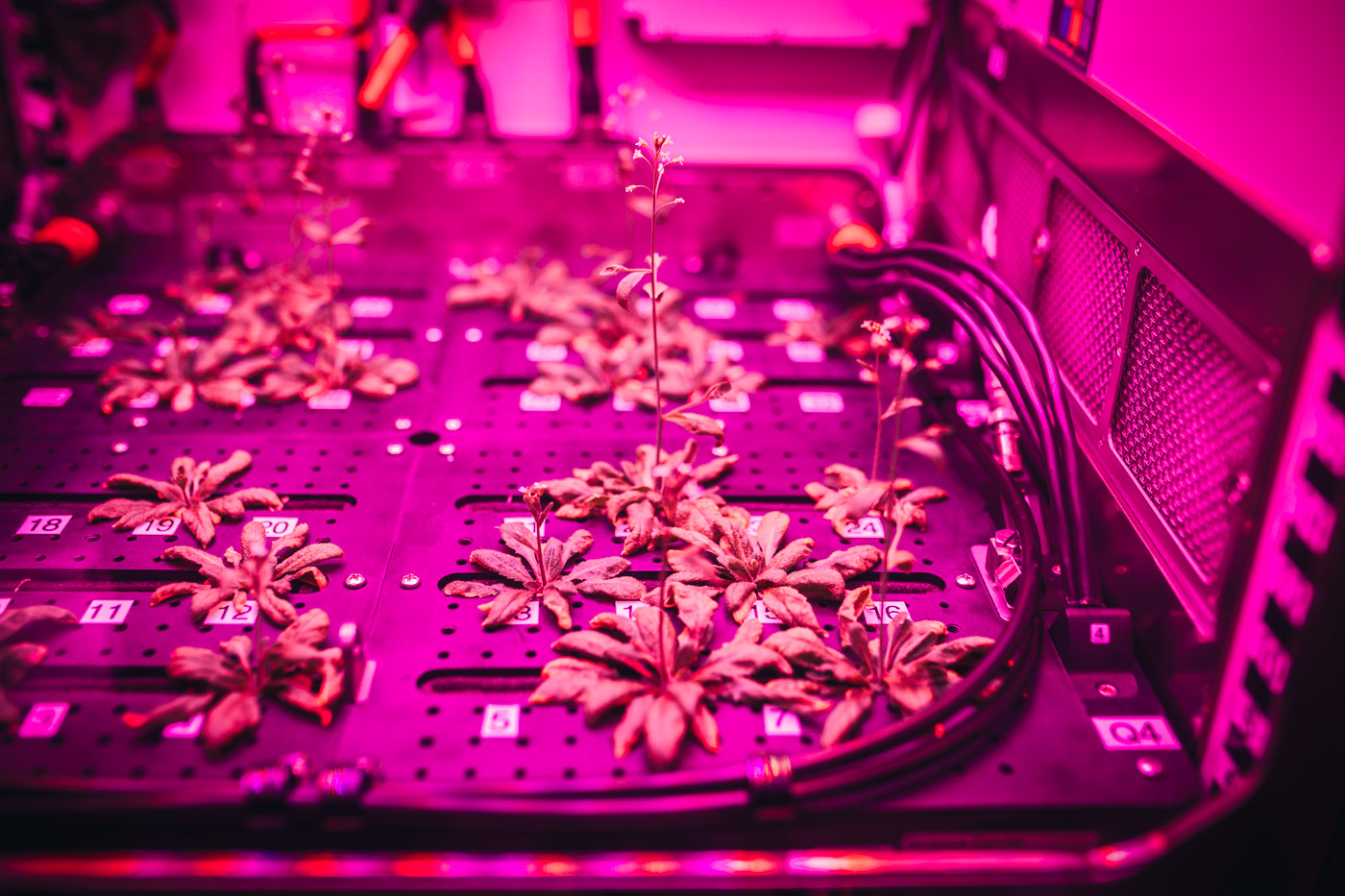

The concept for APH originated nearly eight years ago. And around five years ago, Onate was asked to start working on the project as a project manager. He began his tenure by testing payloads, and was quickly asked to bring these experiments to the Kennedy Space Center. “I was the project manager who brought Veggie to NASA, and now I’m the project manager who brought Plant Habitat. I guess I am like the plant project manager,” he says with a smile. “The plant guy.”
NASA is monitoring an insulated ecosystem they created, glowing under LED light before our eyes. “From a blank piece of paper, to some models, to actually seeing it in person is just impressive,” he says.
He explains that he can go outside and plant something—the ground will have the soil with nutrients the plant needs; the sky will rain, giving the plant the water it needs; the sun will shine, giving the plant the light it needs. “I have to now go grab the lights and replicate the sun. I have to go grab the atmosphere and replicate the atmosphere,” he explains. “I have to actually put the water into the system with some dirt we have called Arcillite, which are like clay chips. We have to put nutrients in it.”
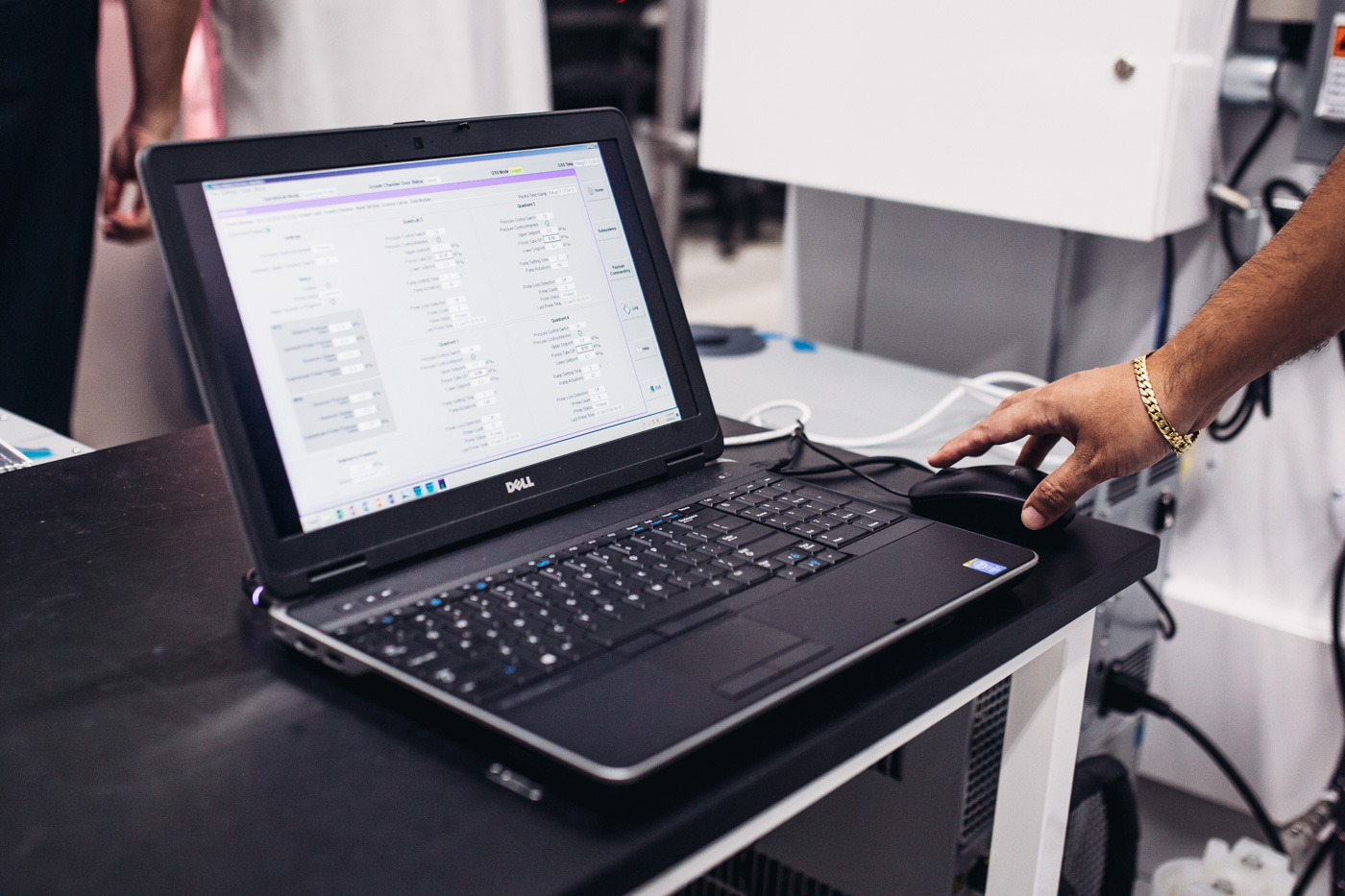
He has essentially helped facilitate the creation of what he refers to as a “mini greenhouse.” “If you think about a greenhouse, you are controlling temperature, humidity, and you are feeding the watering system. I’ve created a small greenhouse here that if we can truly understand what it takes to grow plants in space using Plant Habitat and Veggie, and maybe coming up with one more—even maybe a bigger one—I think we’ll be ready to go to Mars and determine, ‘Can I plant with the regolith they have (the soil) at Mars?’” And alternatively, if NASA should build a greenhouse-like system utilizing all they’ve learned via programs like Veggie, APEX-06 and Long Duration putting into practice all they’ve learned about subjects like water irrigation and microgravity here in the labs at Kennedy Space Center.
“Hopefully when they write the history books one day they will say Veggie and Plant Habitat were one of the first that got us all the way over there,” Onate says about the destination of Mars. “To me, that is kind of cool. I hope to see it. I don’t need my name associated with it, but knowing I helped… that is pretty exciting.”






Our comments section is for members only.
Join today to gain exclusive access.